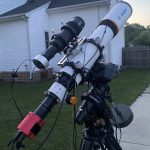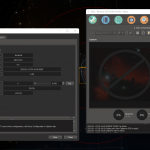
The first night out in nearly a month and it was a good one. A very nice clear sky and my gear work great. I observed a few objects from the CloudyNights’ December 2022 Monthly EAA Observing Challenge. Then had fun just looking at things in and around the area of Orion. Was a great night. Hopefully we have a few more clear ones in near future.
I uncovered the scope early in the day and connected everything up. I re-checked the balance of the scope and all was well. I started observing around 6 PM. I did a visual polar alignment using the polar scope, it was pretty spot on. I am reusing some really old darks and flats. You can tell from the stacks that I really need to reshoot them, especially the darks. It had been so long since I had been out I just wanted to start observing. I’ll reshoot the darks before the next EAA session – maybe, I’ll try, we’ll see.
The EAA images in this post were capture with my ZWO ASI294MC Pro cooled to -10 C through my SVBONY SV503 102ED scope with 0.8 Focal Reducer and a SVBONY IR/UV Cut filter. Focus was obtained with the ZWO EAF using the Ekos Focus Module. The images were live stacked using SharpCap Pro. The mount and cameras are remotely controlled with KStars/Ekos/INDI running on an Astroberry Raspberry Pi. The images have been resized (80% of original) and/or cropped for file size but otherwise appear just as I observed them.
First up I visited a few objects from the CloudyNights’ December 2022 EAA Observing Challenge.
NGC 1491 a bright nebula in the constellation of Perseus. For this one I started with 20 minutes using the ZWO Dual Band filter, but I wasn’t really like the star color so I switched to the UV/IR Cut. I ended up with this live stack of 120 x 15 second exposures at 121 gain, 8 offset, and bin 2×2.
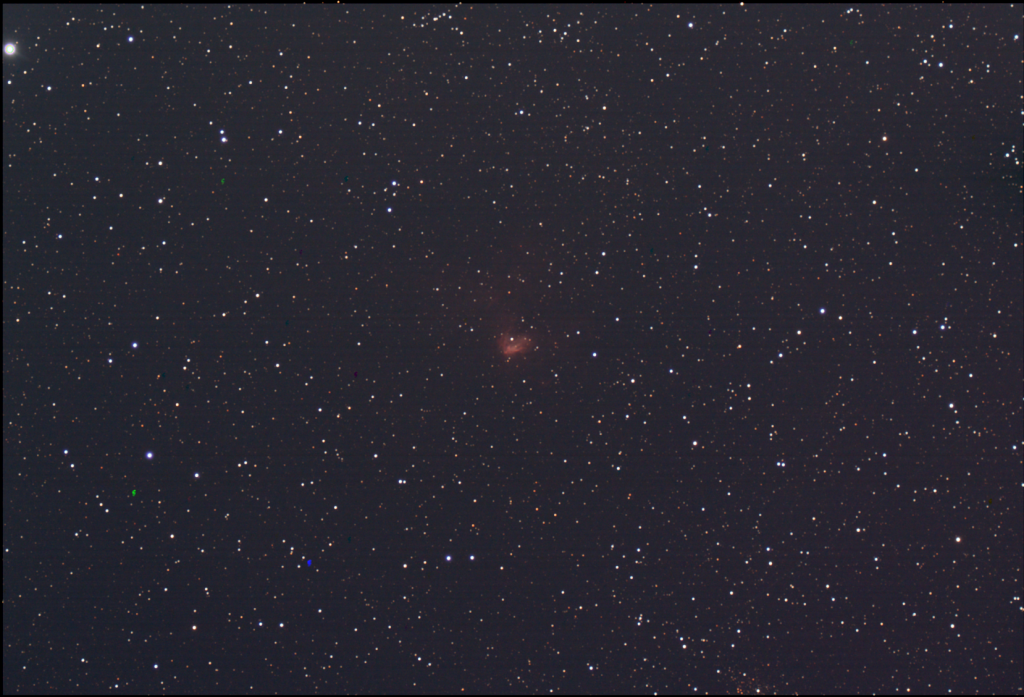
It was pretty early in the night and I was getting a feel for things. I probably should have spent a little more time on it, but… it is EAA and I already spent more time here than my typical 15 minutes per object… so moving on.
I re-ran the Ekos Auto Focus after NGC 1491. It seemed like it was a little soft, plus I had switched filters. After this autofocus run the focus seemed much sharper.
NGC 1499, the California Nebula, an emission nebula in the constellation of Perseus. Part of it anyway, it is pretty large and did not all fit in the frame. This is a live stack of 30 x 30 second exposures at 121 gain, 8 offset, bin 2×2.
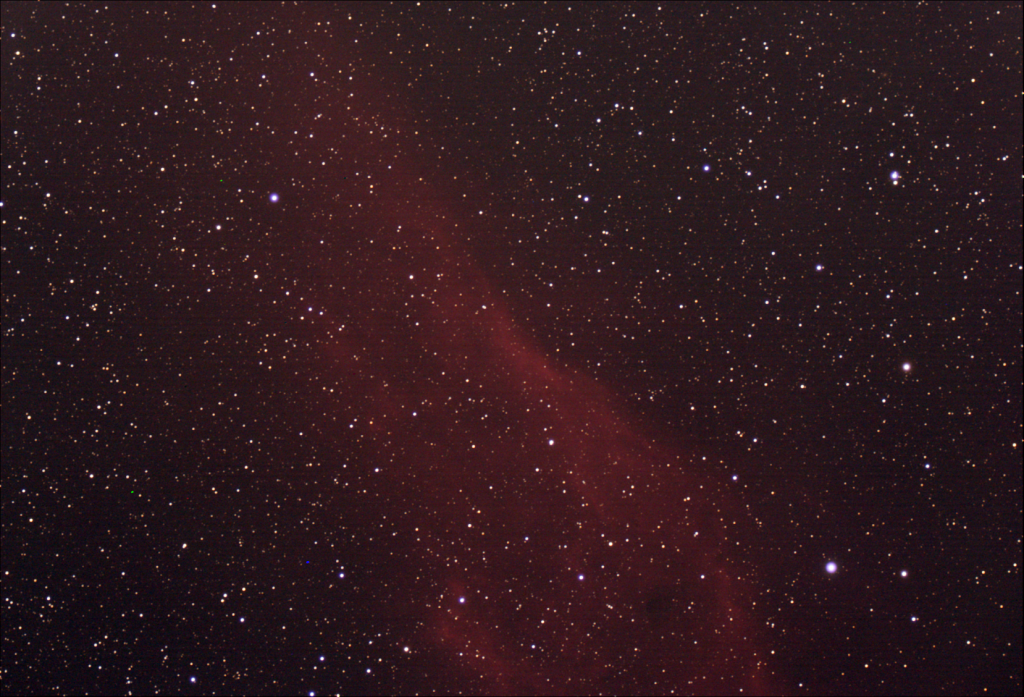
NGC 7640 is a barred spiral galaxy in the constellation of Andromeda. This is a live stack of 60 x 15 seconds at 121 gain, 8 offset, and bin 2×2.
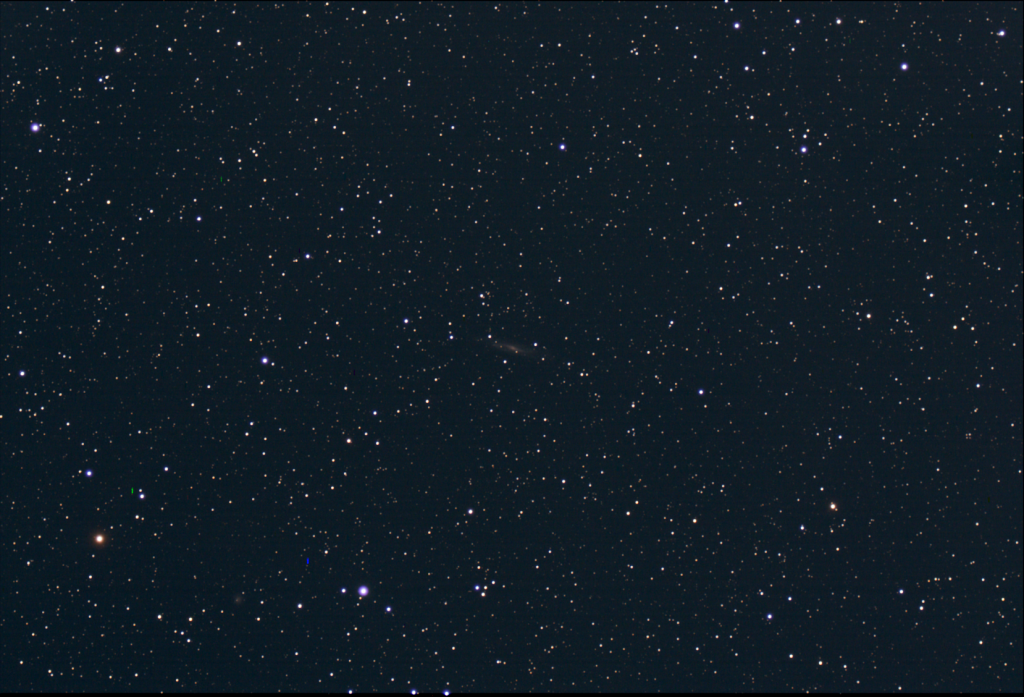
It is pretty faint, and there is not much detail. I can resolve the core and maybe a little darkness and structure in the arms. NGC 7640 is the only galaxy I visited during this session and the last object from the CloudyNights’ December 2022 EAA Observing Challenge I observed last night.
IC 405, the Flaming Star Nebula, an emission and reflection nebula in the constellation Auriga. This is a live stack of 60 x 15 second exposures at 121 gain, 8 offset, and bin 2×2.

Some interesting blues and grays in this nebula.
The gear was working really well at this point. Other than I should have shot darks… there are definitely a couple of blue and green hot pixels. Since things were working well I decided to use 30 second exposures for the rest of my observations.
IC 434, the Horsehead Nebula, and NGC 2024, the Flame Nebula, in the constellation of Orion. This is a live stack of 60 x 30 second exposures (A full hour) at 121 gain, 8 offset, and bin 2×2.

This is one of the best observations I have had of the Horsehead. I can see some of the detail in the dark nebula against the red. Really enjoyed observing this, which is why I let it run for so long. One of my favorites of the night.
NGC 2264, the Christmas Tree cluster and Cone Nebula, in the Monoceros constellation. This is a live stack of 30 x 30 second exposures at 121 gain, 8 offset, and bin 2×2.
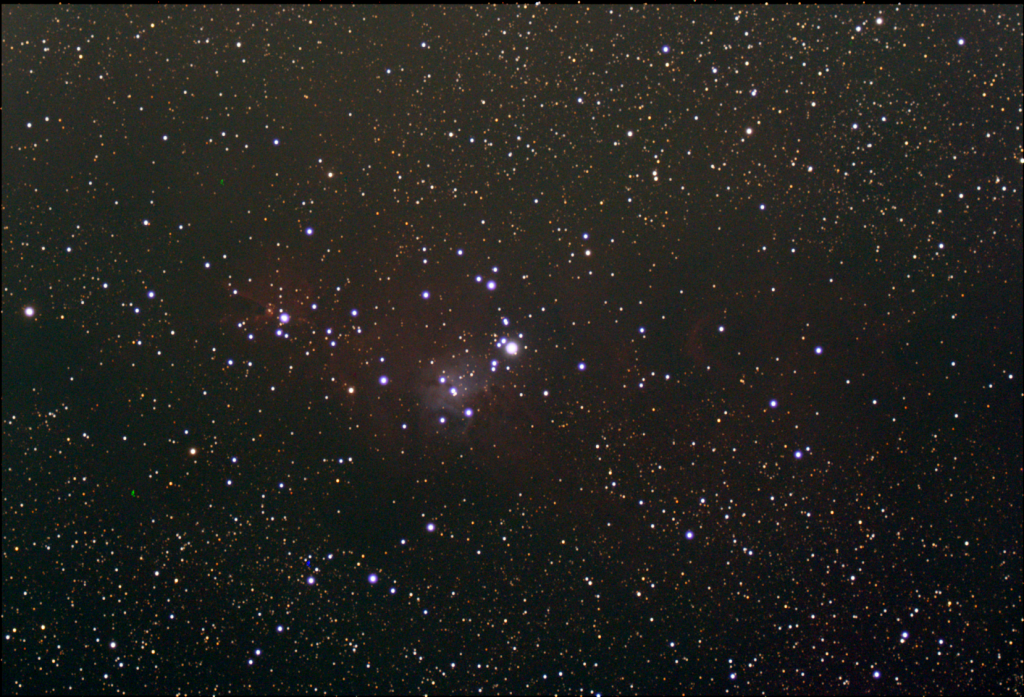
Because it’s almost Christmas… duh.
NGC 2174, the Monkey Head Nebula, in the constellation of Orion. This is a live stack of 30 x 30 second exposures at 121 gain, 8 offset, bin 2×2.
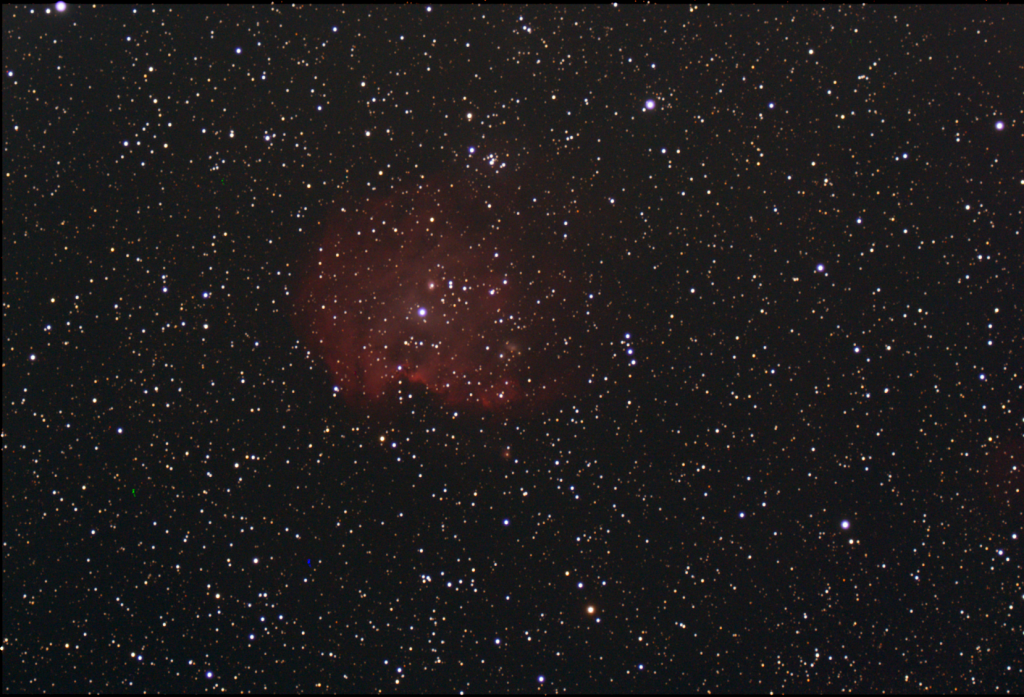
I can definitely see the Monkey head in this nebula. I am guessing there would have been some benefit gained from the narrowband filter here, but it was cold out and I did not feel like going outside to switch out the filter. I really should have just bought the filter wheel instead of the filter drawer.
IC 443, the Jellyfish Nebula, a supernova remanent in the constellation of Gemini. This is a live stack of 30 x 30 second exposures at 121 gain, 8 offset, bin 2×2.

I can just resolve the nebula which makes up the “head” of the Jellyfish. I really like the massive red giant star, HIP 29655, in the lower part of the frame. Another one which probably would have benefited from the narrowband filter. I will definitely plan to revisit IC 443 and NGC 2174 with the HA/OIII dual narrowband filter.
Messier 35 (M35), an open cluster, in the constellation of Gemini. This is a live stack of 20 x 30 second exposures at 121 gain, 8 offset, bin 2×2.
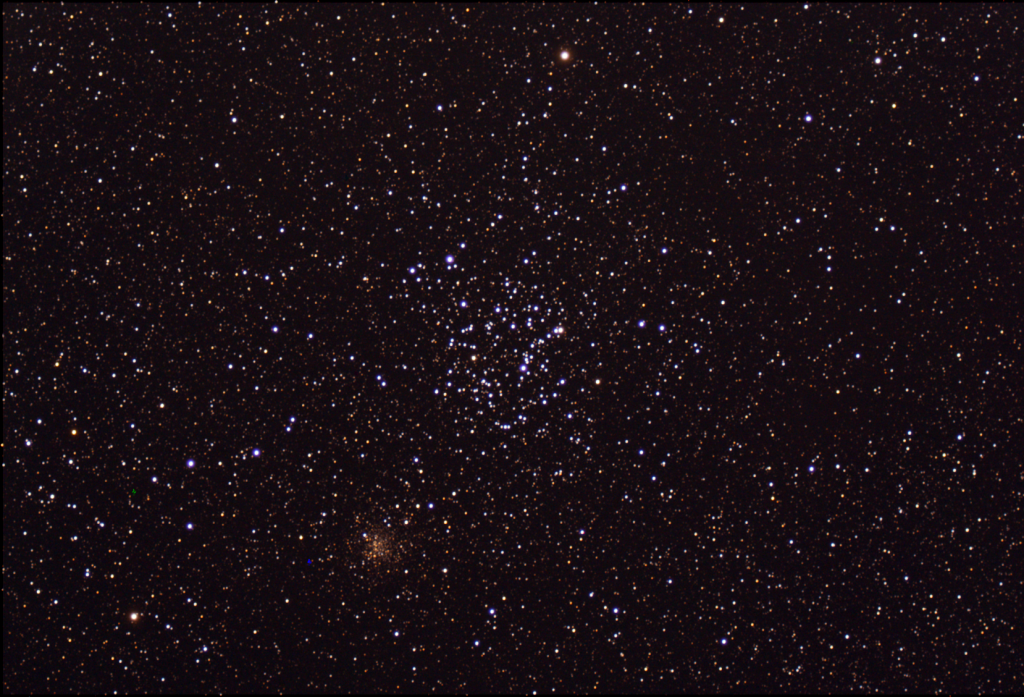
The cluster NGC 2158 is cluster of stars just down to the left of M35.
Messier 1 (M1), the Crab Nebula, a supernova remnant and pulsar wind nebula in the constellation of Taurus. This is a live stack of 30 x 30 second exposures at 121 gain, 8 offset, and bin 2×2.
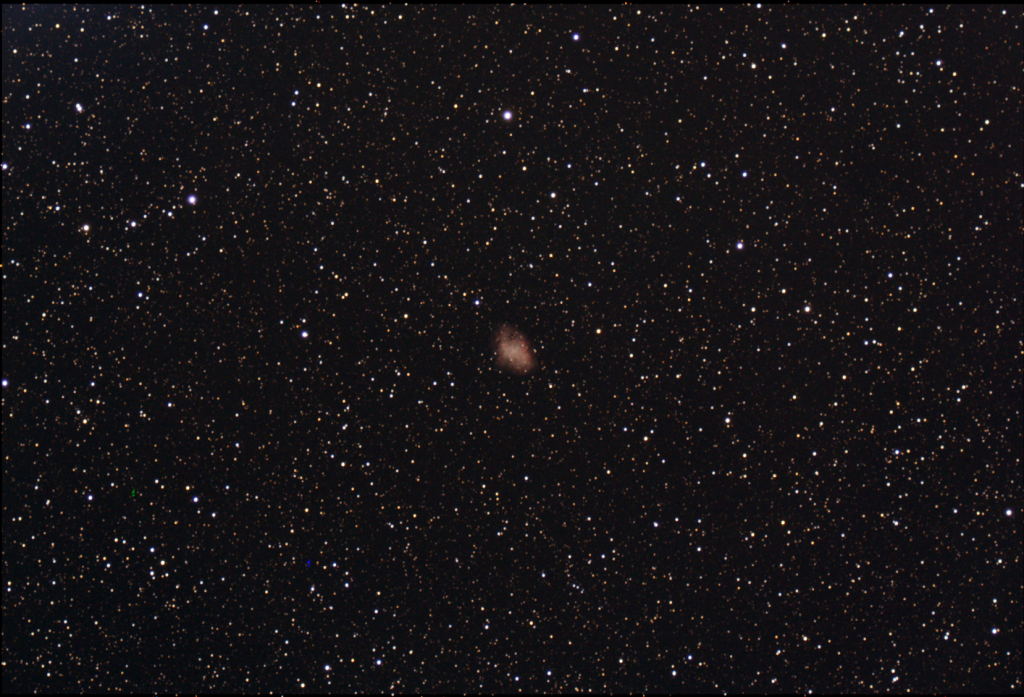
I have observed the Crab Nebula before but this one was really nice. I can just resolve some of the inner filaments. Enjoyed looking at this, another favorite of the night.
Messier 42 (M42), the Great Orion Nebula, in the constellation of Orion. This is a live stack of 30 x 30 second exposures at 121 gain, 8 offset, and bin 2×2.

Pretty nice capture of the Orion and surrounding nebulas. Messier 43, De Mairan’s Nebula is just to the right of M42 and SH2-279, the Running Man Nebula is to the right of that. The open cluster of stars to the left of M42 is NGC 1980.
NGC 2244 is the open cluster of stars located at the center of the Rosette Nebula. The Rosette Nebula is located in the constellation Monoceros. This is a live stack of 40 x 30 second exposures at 121 gain, 8 offset, and bin 2×2.
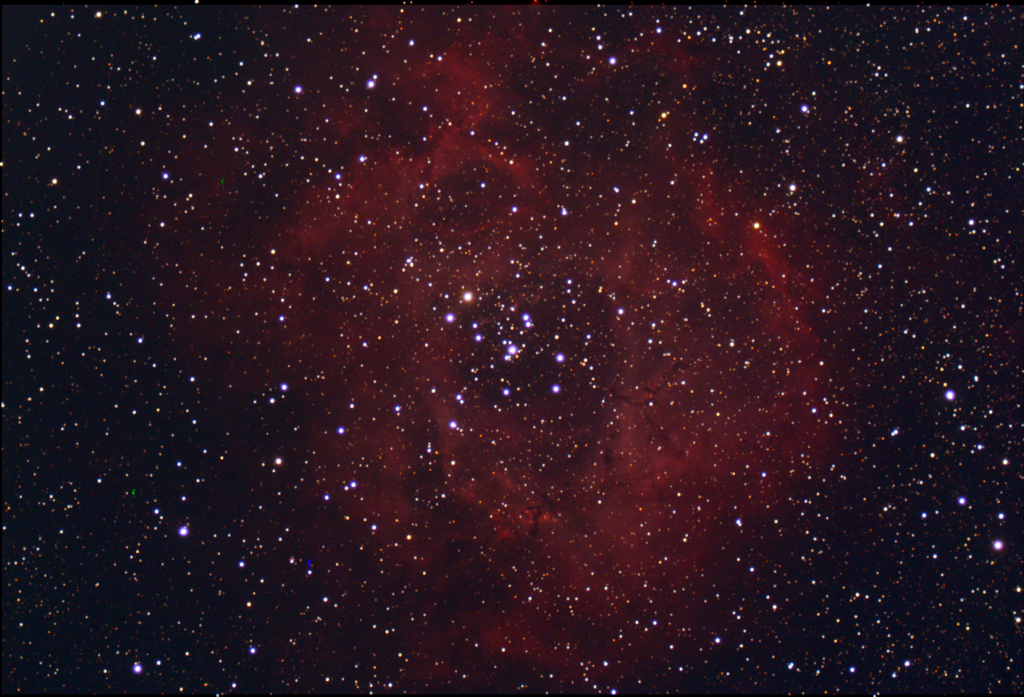
It does resemble a rose.
I went out and covered the scope after midnight. A thin layer of frost had formed on everything which did not have a dew heater on it. The glass in the main telescope and guide scope was still dry and clear.
Great night out. Hopefully it won’t be so long for the next one. Clear skies!






